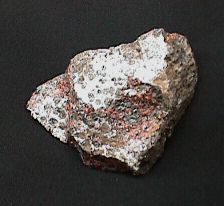The Mineral hydrozincite

Hydrozincite is usually an accessory mineral, forming as masses and crusts on top of other minerals. Aside from fluorescent collectors, this mineral is generally uninteresting to most collectors. However, several localities have produced aesthetic forms of Hydrozincite in groupings of small spiked crystals as ball-shaped aggregates that can be aesthetic.
Hydrozincite is an
alteration product of
Smithsonite,
Sphalerite, or
Hemimorphite, and may fully or partially replace or crust over these minerals. It was named in 1853 by German
mineralogist Gustav Adolph Kenngott (1818 – 1897) for its composition of water (hydro) and zinc. Hydrozincite is unrelated to the mineral
Zincite.
Chemical Formula
Zn5(CO3)2(OH)6
Color
White, cream, light gray, and light yellow.
Crystal System
Monoclinic
Uses
Hydrozincite is known among fluorescent mineral collectors due to its strong fluorescence. It is used as an ore of zinc if found in areas where an abundance of zinc minerals are present.
Noteworthy Localities
Some of the best crystal masses of Hydrozincite are from the Ojuela Mine, Mapimi, Durango, Mexico, where visible spiky crystals and well-formed balls have been found. Hydrozincite has also been found in Europe at Monteponi, Sardinia, Italy; Lavrion, Greece; and in the Preguica Mine, Moura, Portugal. Two important Asian localities are Guilin, Guangxi Province, China; and Yadz Province, Iran.
In the U.S., localities for Hydrozincite include Bisbee, Cochise Co., Arizona; Magdalena, Soccoro Co., New Mexico; the Yellow Pine Mine, Goodsprings District, Clark Co., Nevada; the Tin Mountain Mine, Custer Co., South Dakota; and Franklin and Ogdensburg, Sussex Co., New Jersey. Other occurrences are the Tintic District, Juab Co., Utah; Treece, Cherokee Co., Kansas; Joplin, Jasper Co., Missouri; and Balmat, St. Lawrence Co., New York.
A bizarre locality of this mineral is Lake Hopatcong, Sussex Co., New Jersey. Zinc ore was once barged across this lake on its way to be smelted for production from the nearby zinc mines of Franklin and Ogdensburg. Over the years, zinc ore fell into the lake. The water caused one of the ores, Zincite, to alter to Hydrozincite. When the lake was temporarily drained, Hydrozincite specimens were recovered from the lake bed.
Distingushing Similar Minerals
Hydrozincite is difficult to confuse with other minerals due to its mode of occurrence and strong fluorescence.